![]()
![]()
![]()
Use LEFT and RIGHT arrow keys to navigate between flashcards;
Use UP and DOWN arrow keys to flip the card;
H to show hint;
A reads text to speech;
42 Cards in this Set
- Front
- Back
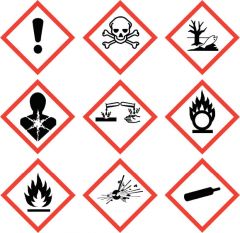
What do the WHMIS 2015 symbols mean? |
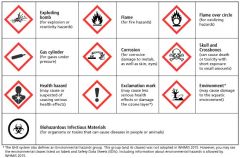
|
|
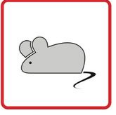
What does this safety symbol mean? |
Animal hazard. |
|
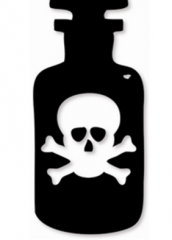
What does this safety symbol mean? |
Chemical safety. |
|
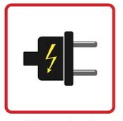
What does this safety symbol mean? |
Electrical hazard. |
|

What does this safety symbol mean? |
Eye hazard. |
|

What does this safety symbol mean? |
Fire hazard. |
|

What does this safety symbol mean? |
Laboratory apron. |
|

What does this safety symbol mean? (generally, this will look like a horizontally cracked beaker) |
Breakage Hazard |
|
|
What is proper attire for the lab? |
Wear laboratory aprons and safety goggles when instructed. Shoes must be worn. Avoid wearing loose fitting clothing. Remove any dangling jewelry. |
|
|
When should you be wearing safety goggles? |
- When working with an open flame - When working with chemical substances - When using a mechanical device |
|
|
When should you be wearing a safety apron? |
When working with any chemicals. |
|
|
What kinds of fooling around activities are prohibited? |
Rough play (running throwing), horseplay, practical jokes, pranks |
|
|
Should you work alone or with a partner in the lab? |
You should NEVER work alone. |
|
|
What should be brought to class? What should not be brought to class? |
Notebooks, pens, binders, paper and science materials should be brought to class. Items like purses, backpacks and jackets should not be brought to class. |
|
|
Should you ever perform your own, unauthorized experiments? |
No. You should NEVER perform unauthorized experiments. Always follow the teacher's directions. |
|
|
What are the rules regarding food and drink? |
No food or drink is allowed in the lab. This includes chewing gum. |
|
|
What are the rules regarding chemicals? |
1. Never mix, touch, taste, heat or inhale chemicals unless you are told to do so. The wafting method should be used. 2. Never pour water into an acid- ALWAYS POUR THE ACID INTO THE WATER 3. Dispose of all chemicals as instructed by your teacher. 4. Wear safety goggles. 5. Only use chemicals you have been instructed to use. 6. If chemicals are splashed or spilled on your hands, immediately rinse with cold running water. For bigger spills involving clothing, use the safety shower. 7. Always wear a lab apron. |
|
|
What should you do before beginning an experiment? |
Note any cautions or hazards described. Make sure that you understand the procedure before beginning the lab. If you don't understand, ask the teacher! |
|
|
What happens if you spill a chemical in the lab? |
Report it to the teacher so that it can be cleaned up appropriately. |
|
|
What do you do if you cause an accident? |
Report all accidents to the teacher, no matter how minor. |
|
|
What are the three main safety rules when working with open flames? |
1. Wear safety goggles. 2. Tie back long hair. 3. Secure loose clothing. |
|
|
What are some rules regarding laboratory glassware (4 rules)? |
1. Never eat or drink from laboratory glassware. 2. Do not use chipped, cracked or broken glassware. 3. Never force glass tubing into a rubber stopper. A turning motion and a lubricant will be helpful when inserting glass tubing into rubber stoppers. 4. Hot glassware will not appear to be hot. Never pick up glassware without first checking to see if it is hot. |
|
|
What do you do with electrical cords? |
Don't let the electrical cords dangle from workstations. |
|
|
What do you do with gas jets, electrical connections, and water faucets at the end of the period? |
Turn them off. |
|
|
Should you return unused chemicals back to their original containers if you accidentally took too much? |
No. To avoid contamination, never return unused chemicals |
|
|
How do you use the eyewash fountain and when should it be used? |
In the case of eye contact, go to the eyewash station and flush your eyes out with running water for at least 15 minutes. The eyelids should be open, rotating the eyes as much as possible so water can flow on all surfaces, and in the folds surrounding the eyeballs to ensure removal of the chemical. Contact lenses should be removed immediately, if applicable. |
|
|
How do you use the emergency shower and when should it be used? |
In the case of chemical spills to the body or if clothing catches on fire, use the emergency shower. Begin use as soon as possible. Stand under the shower, pull the handle, remove contaminated clothing. Stay in the shower for a minimum of 15 minutes. |
|
|
How do you use a fire extinguisher? |
Remove the safety pin and squeeze the handle to discharge the extinguisher. |
|
|
How do you use a fire blanket and when should it be used? |
Use the fire blanket if clothing catches fire. The blanket should be spread on the floor so that the person whose clothing or hair is on fire can wrap it around the body when rolling. It can also be used to throw over a small fire on a lab table. |
|
|
How do you use a fire alarm? |
Pull down the handle. |
|
|
What do you turn off and unplug in the case of fire? |
All gas outlets should be turned off and unplug all appliances. |
|
|
What should you make sure when heating glassware? |
That it is heat resistant. |
|
|
When heating test tubes you should..... |
Point the mouth of the test tube away from all persons. |
|
|
When working with open flames you should.... (4 rules) |
1. Never reach across a flame. 2. Keep all books, paper, hair etc. away from open flames. 3. Tie back long hair and loose fitting clothing. 4. Wear safety goggles. |
|
|
What are 5 rules regarding handling living organisms? |
1. Never cause pain, discomfort or harm to a living organism used in an experiment. 2. Treat all living things with care and respect. 3. Do not touch any plant or animal in the lab unless directed to do so. 4. Treat all microorganisms as of they were harmful. Use aseptic techniques as directed by your teacher. 5. Wash your hands thoroughly with soap and water if you have handled any living organisms. |
|
|
What should you do in case of thermal burns? |
Immediately place the burned area under cold, running, water. Greases and oils should not be placed on burned skin. Notify your teacher immediately if you are burned. |
|
|
What should you do in case of fainting or dizziness? |
Provide the person with fresh air. Have the person lie down so that the head is lower than the body. |
|
|
What should you do in case of a chemical spilled on the skin? |
Wash with lots of water. Know the location of the safety shower. |
|
|
What should you do in case of a chemical splashed in the eyes? |
Flush out the eye for 15 minutes at the eye wash station. Know how to work the eye wash station. |
|
|
What should you do in case of minor cuts? |
Wash with soap and water. Treat with items in first aid kit. |
|
|
What should you do in all cases of injury/accident? |
Notify the teacher immediately. Do not try to hide an accident. |
|
|
What are the 5 end of class procedures (MOST LIKELY WILL BE ON THE QUIZ)? |
1. Turn off water and gas. Disconnect electrical devices. 2. Return all materials to their proper places. 3. Dispose of all chemicals according to your teacher's instructions. 4. Clean your work area. 5. Wash your hands with soap and water |

